#there are many benefits to being an archaeologist
Explore tagged Tumblr posts
Text
Current mood: Bronze Age sleeping faience hippopotamus (Byblos)

#hippopotamus#faience#archaeology#there are many benefits to being an archaeologist#lebanon#national museum
471 notes
·
View notes
Text
This is kind of a weird reason for hope, honestly, but it genuinely changed how I think about catastrophe.
Historical fact that you probably do not know:
At least 30-50% of the population of Pompeii survived.
Maybe even the majority of the people of Pompeii survived.
(The numbers 30-50% there are according Professor J. Theodore Peña, a professor of ancient Roman archeology who studies Pompeii, whom I took a class on Pompeii with in 2018. The numbers of "maybe even the majority" are from articles linked below.)
Yes, that Pompeii, the one where the entire city was swallowed by a volcanic eruption.
And no, I'm not kidding. x, x, x, x, x, x
So how this is possible, that anyone could survive, when the entire city was literally buried in volcanic ash? And the answer is that the eruption actually took place over the course of almost 24 hours, as the earthquakes and clouds of smoke emitting from Pompeii gradually got worse and worse, followed by the ejection of ash and giant stones that gradually escalated, until the fifth pyroclastic flow (aka giant wave of searing hot ash) hit the city.
So, people had a bit less than 24 hours to flee the city. And many of them did, whether by boat or cart or horse or foot. And many of them made it.
Pompeii is the iconic, ultimate example we have, culturally, for a natural disaster that causes complete annihilation.
But it never caused complete annihilation at all. Not of the people who lived there.
I think climate change, ultimately, is going to be like Pompeii. Yes, there will be natural disasters. Yes, it will keep getting worse for a while.
Yes, people will die, and yes, we do need to act fast, and we need to do all that we can to save every single living being that we can.
But unlike the people of Pompeii, we have the ability to fix most of the effects of climate change. We have the ability to cool the planet down from whatever temperature it ultimately hits. (Masterpost on this here.)
Natural disasters fucking suck. But as the true story of Pompeii exemplifies, they are often a lot more survivable than we think. And we have benefits and resources and technology and knowledge above all communication that the people of Pompeii never did - in fact, we're getting so good at building for and detecting and warning for natural disasters that the number of people dying from natural disasters has been plummeting, even as natural disasters are getting worse and worse (x).
We are going to survive climate change (x). We are going to fix as much of it as we can (x). And we are going to rebuild afterward.
Because as the many survivors of Pompeii show, that's what humans do.
#pompeii#rome#roman archaeology#natural disasters#climate change#climate crisis#global warming#climate action#climate hope#hopepunk#me#not news#weird reasons for hope#might make that a tag or masterpost at some point I have a few more of these kicking around in my head#history#archeology#ancient history#climate anxiety
4K notes
·
View notes
Text
Empires smp s2 Western AU
Lizzie is the town mayor who everyone knows is corrupt and definitely involved in some underhanded dealings, but nothing ever really gets done about it because her little brother Jimmy is the exasperated sheriff who keeps burning all the reports on her. He doesn't know how much longer he can keep doing this for her, but what is he going to do? That's his sister.
Most of the stuff Lizzie does under the table is really pretty harmless anyway, or at the very least doesn't affect the people of the town much, so they're mostly content to let her do whatever.
Sausage and Joel are couple who married for tax benefits, and accidentally adopted Hermes when they found him living under their porch like some kind of raccoon.
Lizzie takes great pride in being the fun "aunt" who teaches him swears and feeds him more sugar than he probably should have. She also won't stop flirting with Joel whenever she gets the chance.
"Aunt Lizzie taught me about tax fraud today!"
"Why does the mayor need to know how to commit tax fraud?"
Scott is the bartender with a really complicated, off and on relationship with Jimmy. It basically consists of flirting his way out of trouble because he's definitely a dealer in the black market and a lot of sketchy shit goes down at his bar.
Katherine is the daughter of the wealthiest man in town who moonlights as a vigilante, and Shelby is the town doctor who she keeps visiting in order to patch up the injuries she gets while out at night. Not so surprisingly, they are both crushing hard on one another.
Joey is a bandit whom Katherine regularly crosses paths with. He's a bit infatuated with her even though she is not interested in the slightest.
False is a reclusive engineer whose projects are... questionable at best. Everyone has just kind of learned to ignore the strange explosive sounds coming from her house.
Oli is a musician who plays at Scott's bar. Jimmy is convinced there is something up with that guy but he is in fact, not involved in the previously mentioned sketchy shit at all. He's shockingly oblivious to all of it, actually.
Fwhip is the town's deputy who really doesn't like Jimmy. They tolerate each other for the sake of their work but things tend to get complicated when you have to work with your ex-boyfriend on a daily basis. They try to avoid one another whenever possible.
Gem is a farmer who ran away from wealthy parents because she got bored with that life. She also works at a beekeeper. Basically the entire town's only food source.
Pixlriffs is an archaeologist who came out to study a new dig site and then realized that there were so many fossils out here he could spend the rest of his life here without running out. Whenever he's not out digging he's running the local library. Has the weirdest, most random collection of hyperspecific knowledge.
#western au#empires smp#empires smp s2#empires s2#empires season 2#empires smp season 2#solidaritygaming#solidarity gaming#ldshadowlady#mythicalsausage#mythical sausage#smallishbeans#smajor1995#scott smajor#katherine elizabeth#shubble#joey graceffa#falsesymmetry#false symmetry#the orion sound#oli orionsound#fwhip#geminitay#pixlriffs
270 notes
·
View notes
Text
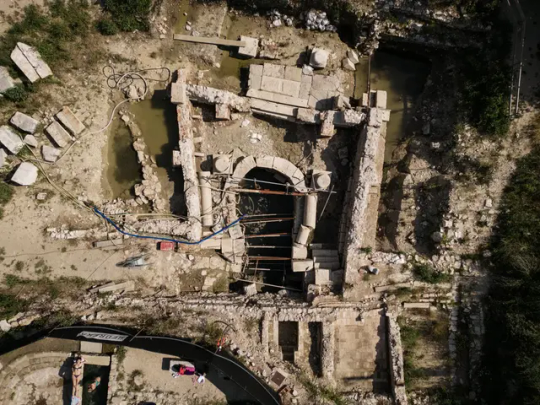


These Bronze Statues Reveal Ancient Healing Rituals
Discovered in a dig at a thermal spring in Tuscany, Italy, the well-preserved items offer a glimpse into medical practices from the Etruscan and Roman eras.
An exhibition that opened Friday at Rome’s Quirinal Palace could be described as a classic rags-to-riches story.
Just ten months ago, many of the bronze statues now on show there — artfully spotlighted and captioned — were submerged in layers of thick mud in what had been a sacred pool of thermo-mineral water roughly halfway between Florence and Rome.
Their rediscovery last fall during an ongoing archaeological excavation in a field just below the Tuscan town of San Casciano dei Bagni made headlines around the world, propelling the bronzes — via a stint in Italy’s main restoration institute — to the rare honor of being exhibited at the presidential palace.
“It’s an extraordinary discovery,” Luigi La Rocca, the culture ministry official responsible for archaeology, fine arts and landscape, told reporters at the palace on Thursday, praising the variety of the bronzes, their quality and their high degree of conservation.
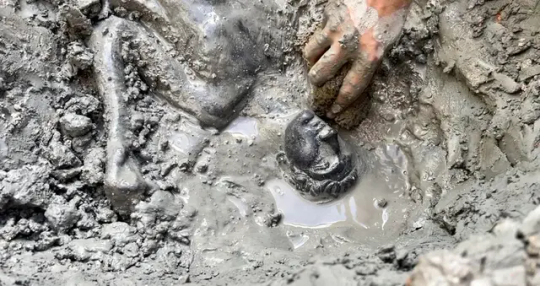
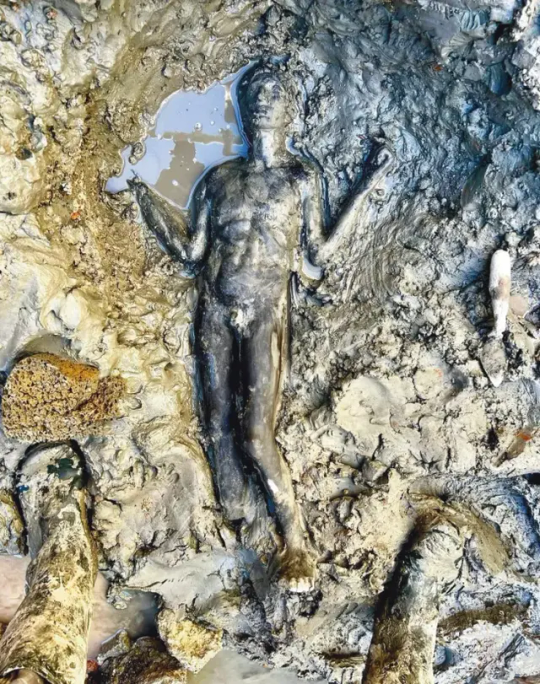
The artifacts — mostly dating from the second century B.C. to the first century A.D. — were votive offerings collected in the sacred pool of the so-called Bagno Grande, or “large bath,” part of a sanctuary that was in use in various forms for more than 700 years.
Lightning struck the building around the first century A.D., and following the Etruscan tradition of burying objects struck by lightning in a sacred place, the statues and other artifacts were concealed under a layer of terra-cotta tiles along with a bronze thunderbolt, a ritual called “fulgur conditum.”
Successive votive offerings, mostly bronze coins and plants, were deposited until Christianity became the official religion of the Roman Empire in the fourth century A.D. Then, the sanctuary was dismantled, and its offerings were buried once again, which contributed to their remarkable conservation.
The dig that uncovered them began in 2019, but it was only in 2020 that the first artifacts — inscriptions, altars and small bronzes — began to emerge. Last year, the archaeologists dug further down into the sacred pool.
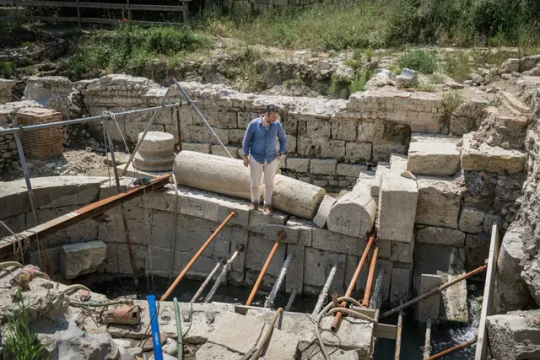
“We thought there could be something here, but nothing like what we found,” said Emanuele Mariotti, the director of the excavation, on a recent hot afternoon as he surveyed the site. “It was like a time capsule waiting to be opened,” he added.
The finds offer insights on ancient medical practices. The waters were considered curative by “Etruscans, Romans, Christians and Pagans,” Mariotti said. “This was a place of healing, meeting of cultures and medical knowledge.”
Many of the bronzes had inscriptions from the territory of Perugia, about 70 kilometers northeast of San Casciano, a considerable distance to travel more than 2,000 years ago. This shows “how complex and nuanced” cultural interaction was at the time, added Jacopo Tabolli, the scientific director of the dig and co-curator of the Quirinal show.
“Gods changed, but the water remained the same,” he added.
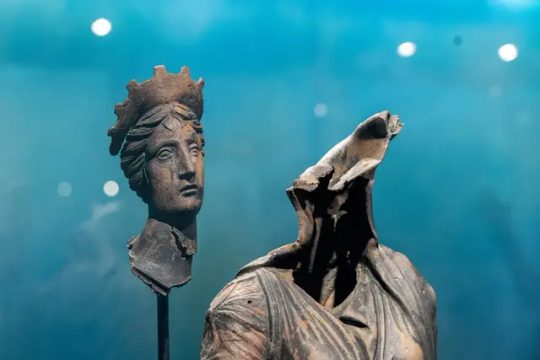
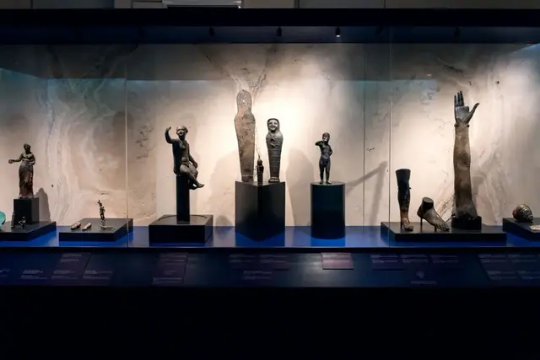
Some of the bronzes are still being restored, but many made it to the Quirinal for the exhibition. In one room, bronzes of arms, feet, ears and other body parts are on display, reflecting the various ailments that were treated at the thermal baths.
“These are unique,” Mariotti said, stopping in front of two bronze plaques showing what he said was a “very accurate” depiction of internal organs. Similar terra-cotta examples existed, he said, but bronze versions were hitherto unknown.
Other statues represented gods and goddesses, but also men, women and small children, wrapped in swaddling cloths. Some were sickly and in need of healing. Others appeared to have benefited from the cures.


The thermal springs are still used today for their therapeutic properties, both in the public baths near the archaeological site and at a private resort.
For San Casciano dei Bagni, a picturesque hilltop town, the ancient finds will hopefully bring new economic prospects, especially after the opening of a new museum in the city center.
Earlier this week, at a property deed transfer in Rome attended by various authorities, the culture ministry formally bought a palazzo in San Casciano dei Bagni from local clerics to house the museum (list price 670,000 euros, around $730,000) and Italy’s culture minister, Gennaro Sangiuliano, pledged to contribute “additional resources.”

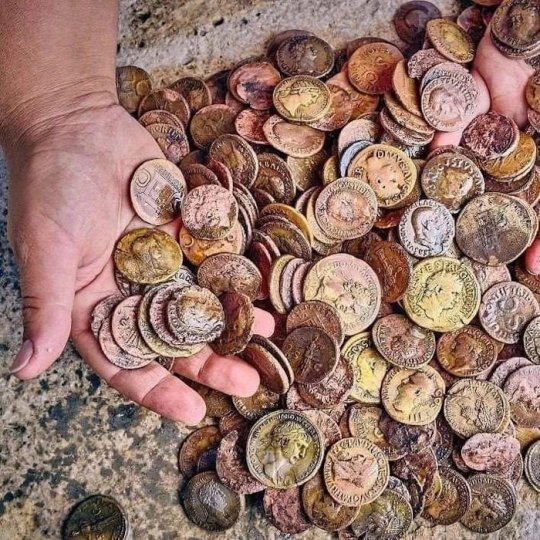

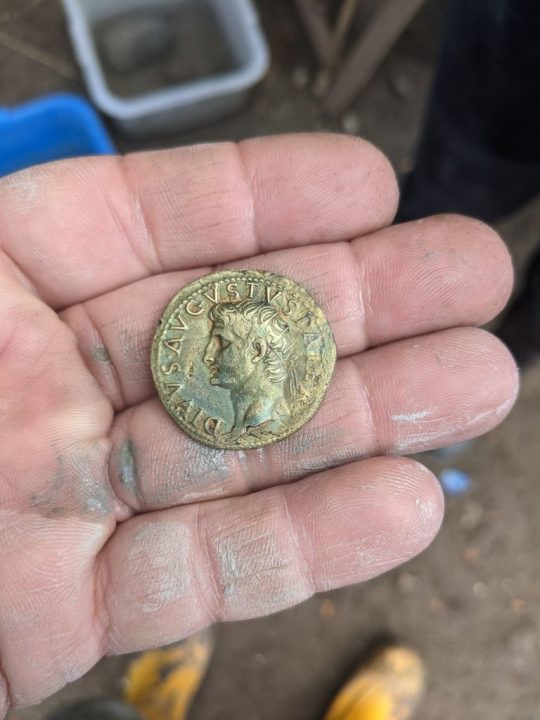
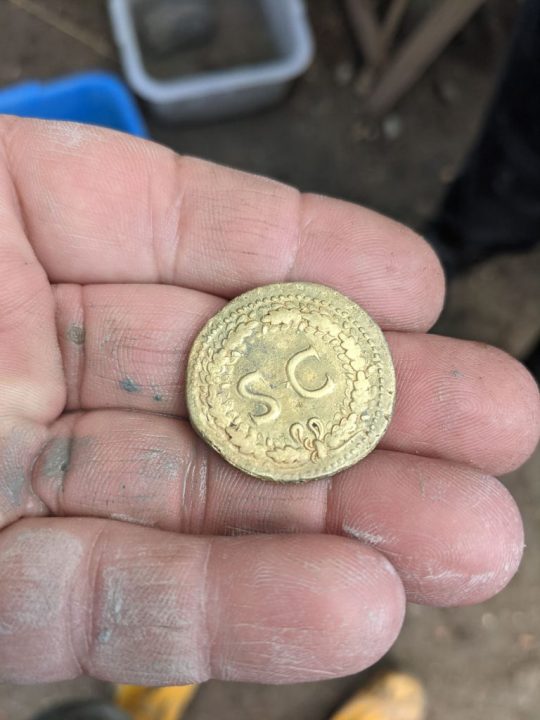
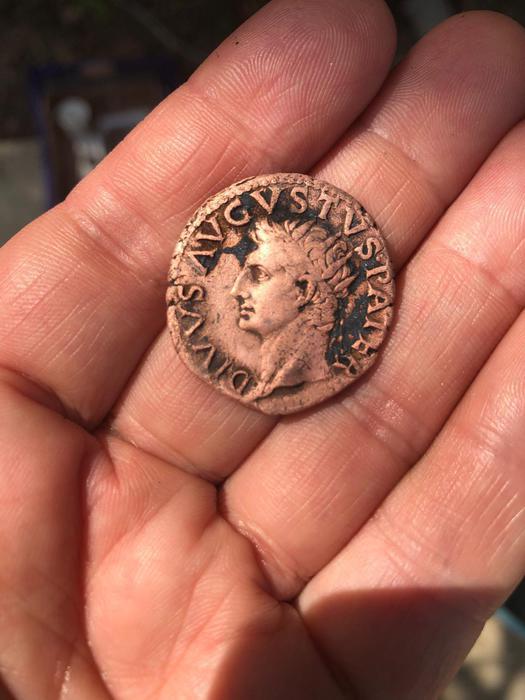
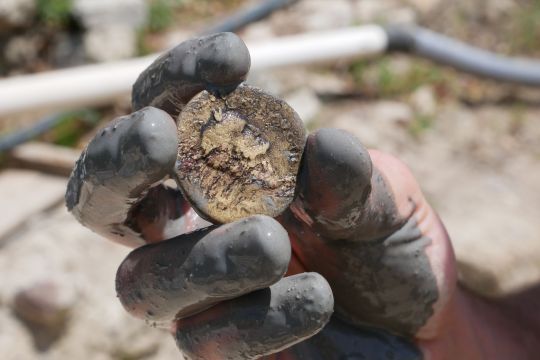
Massimo Osanna, the director of Italy’s state museums said Thursday that he hoped one section of the museum would be ready next year. “I’m an optimist,” he said.
“It’s going to be a tremendous opportunity,” said Agnese Carletti, the town’s mayor. Following on from previous administrations, Carletti’s council championed and funded the local archaeological excavations that led to the finds, offering room and board to archaeology students participating in the summer digs.
A new excavation begins next week, and Tabolli said that it would concentrate on expanding the archaeological site to better understand the context around the sacred pool. “We’ve reconstructed the structure of the sanctuary, but there is still much more to know about the overall site which must have been monumental,” he said.
Osanna said that more surprises could be in store. “We don’t know what else the sanctuary has to offer,” he said.
By Elisabetta Povoledo.
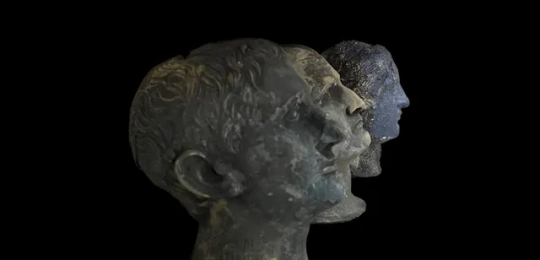
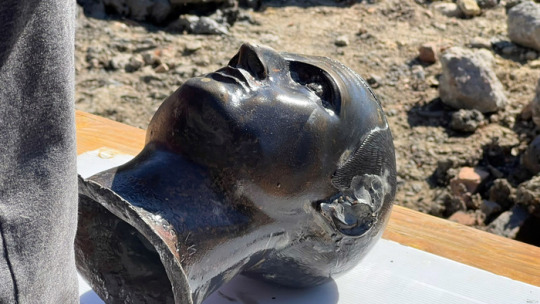


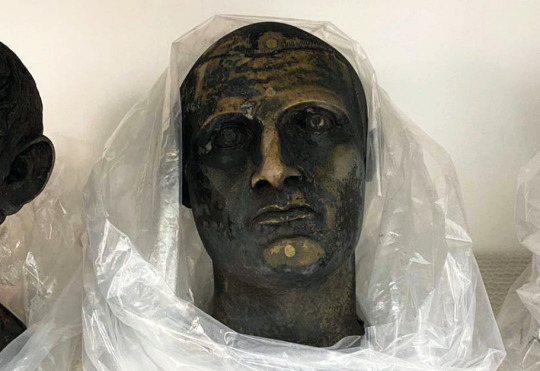
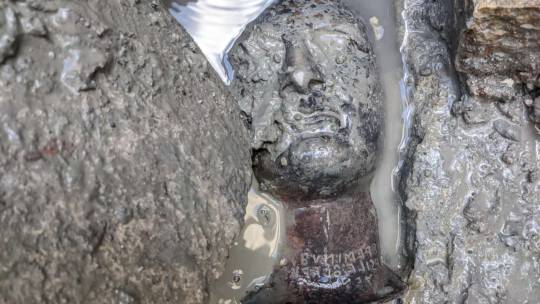
#These Bronze Statues Reveal Ancient Healing Rituals#Etruscan And Roman Treasure Trove Unearthed In San Casciano dei Bagni#bronze#bronze statues#bronze sculpture#roman coins#ancient artifacts#archeology#archeolgst#history#history news#ancient history#ancient culture#ancient civilizations#roman history#roman empire#etruscan history#etruscan art#roman art#ancient art#long reads
130 notes
·
View notes
Text
Martyr’s don’t kill innocents including children. Content warning: it’s about a school shooting and people posting pictures of themselves holding weapons.
Controversial group behind 'Trans Day of Vengeance' raised money for firearms training - as other trans protestors pose with guns ahead of march in DC on Saturday
The protest was rebranded before the Nashville tragedy from 'visibility' to 'vengeance' by the Trans Radical Activist Network
But some social media users appear to have taken the protest to another level and have posed with powerful firearms posted along with the hashtag
Twitter has since removed more than 5,000 posts that have used the flyer for the event on April 1
Despite three nine-year-olds being gunned down by a transgender shooter at a private Christian school in Nashville, activists are still rallying the troops to protest for a 'Trans Day of Vengeance' - months after raising money for firearms training.
Transgender shooter Audrey Hale opened fire on the Covenant School in Nashville at 10.30am on Monday, killing Hallie Scruggs, William Kinney and Evelyn Dieckhaus during her rampage at the school.
But despite rising political tensions across the country, which saw a press secretary for Arizona Democrat Governor post a Tweet about shooting transphobes, the Trans Radical Activist Network (TRAN) is pushing forward with their protest in DC.

The Virginia chapter of the group held a 'dance party fundraiser' in Richmond 'benefiting firearm/self-defense training for trans-Virginians' on March 7, before the mass shooting had taken place.
In statements, the group has taken pains to distance themselves from Hale, and her actions, and changed the name of the protest before the brutal slayings.
The protest on Saturday was initially meant to be called a 'day of visibility' but rebranded before the shooting to vengeance because it means 'fighting back with vehemence' – though the group was quick to say they do not 'encourage or promote violence' when contacted by DailyMail.com.
But one person posing as an activist appears to have taken the movement to the next level, posting a picture of a heavily armed person with an assault rifle and threatening to 'kill christcucks' - as Twitter removed thousands of posts with flyers for the event.
Twitter has been removing the posts that could be deemed threatening or involve guns associated with the 'TransDayofVengeance' hashtag - but it is unclear exactly how many were others posing with weapons as they have since been deleted.
Ella Irwin, Twitter's head of trust and safety, wrote that the company removed more than 5,000 tweets that included a poster for the event.
She said: 'We do not support tweets that incite violence irrespective of who posts them.
'Vengeance' does not imply peaceful protest. Organizing or support for peaceful protests is ok.'
Two other trans activists have since posted footage and photos of themselves with rifles, which appear to be in direct response to the Nashville shooting.
One says that she will use the weapon for 'protection' against 'transphobes' who target them.
Kayla Denker, who describes themselves as a ‘communist, archaeologist and writer, posted the video of herself with her gun after the incident in Nashville – despite saying ‘advocating for trans people to arm ourselves is not any kind of a solution to the genocide we are facing’.


She is also appealing for help with the medical bills for her transition on her social media, which has now been locked down.
Republican Representative Marjorie Taylor Green also saw her account removed after she launched several anti-trans attacks on Twitter.
Greene claimed that 'Antifa' was organizing the alleged event, and reposted a poster for the protest while complaining Twitter kept removing her posts before she was ultimately suspended.
Activists are being encouraged to 'bring a buddy' and wear a mask at the event outside of the Supreme Court in DC on April 1, and is billed as avenging a 'trans genocide.'
Organizers did not respond when asked questions about the safety of protests amid the increasing pressure between the two sides of the political spectrum.
Websites such as Etsy are still being used to sell pro-gun and trans merchandise, with stickers that say 'defend equality' with assault rifles on as well as t-shirts and other items emblazoned with 'Trans rights… or else' which also have the high-powered guns in pink, white and blue – the Trans colors – on them.



TRAN is run by three co-founders, one of whom is a former staffer for the Virginia Democrats and stepped down to work with the group.
Bo Belotti, the national recruitment director, is a 'trans masculine non-binary person' and helped the Virginia chapter of the group to raise money to go on guns and self-defence.
On March 7, the Virginia chapter held a 'dance party fundraiser' in Richmond 'benefiting firearm/self-defense training for trans-Virginians. Come boogie with us and defend trans life!'
Belotti worked as a fellow for Del. Elizabeth Guzman, and Del. Joshua Cole as a legislative aide and helped draft HB 145, which required the state to create model transgender policies for public schools.
His bio on the website adds: 'While working in their state's legislators they helped craft trans-affirming statewide policies.'

Another co-founder is non-binary Tsukuru, who had been posting updates on the protest before locking down their account following the backlash in the aftermath of the mass shooting.
Their bio states that they were a 'graduate of a high school in Hiroshima where 350 young lives were brutally taken on August 6, 1945, Tsukuru is an anti-nuclear/anti-war/human rights activist.'
It adds: 'After his brief marriage to his best friend and the birth of his child, he first came out as lesbian at age 29 and as a transgender man at age 50.'
The final founder is Noah Buchanan who helped to set up Tran initially, writing on the website: 'Noah Buchanan; I am a transgender male and have been out since 2018. I have 10+ years of working in the mental health field.
'What motivated me to start TRAN was the fact I was bullied to the point where I attempted to end my own life. The person that bullied me was a fellow member of the LGBTIA+.'

In a statement to DailyMail.com Buchanan said: 'What I will say is that this protest was not about encouraging or promoting violence.
This protest is about uniting and letting people know that we are human beings, we exist, and love conquers hate.'











see whole article
#Trans cult and weapons#Nashville#Trans Resistance Network#Trans Day of Vengeance#Trans Radical Activist Network#April 1#Twitter#HB 145
123 notes
·
View notes
Text
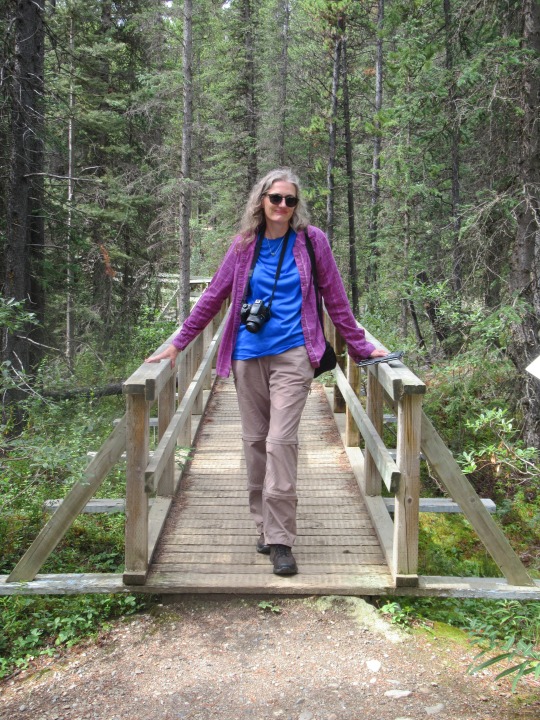
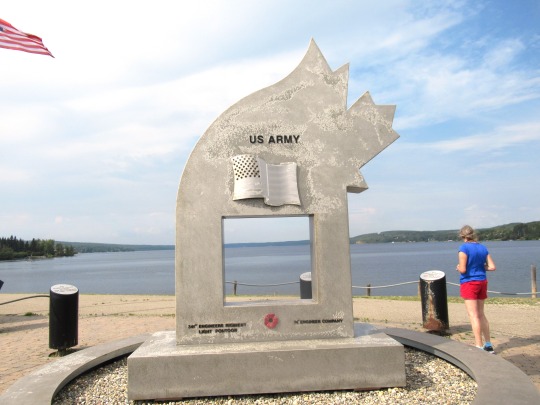





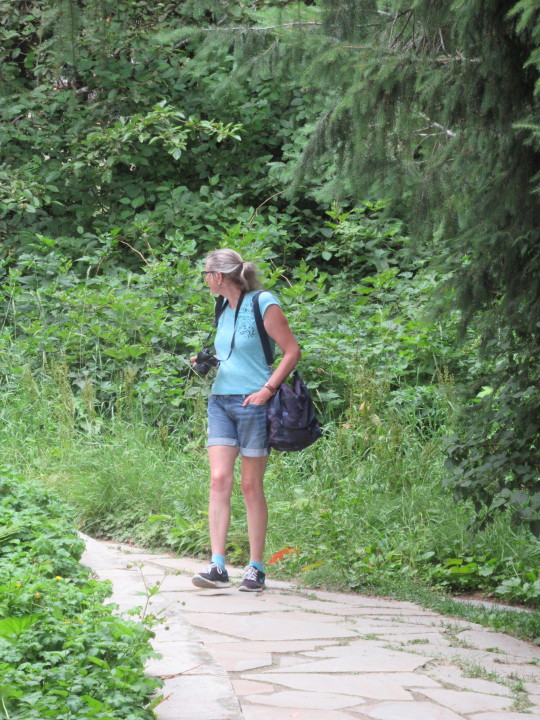
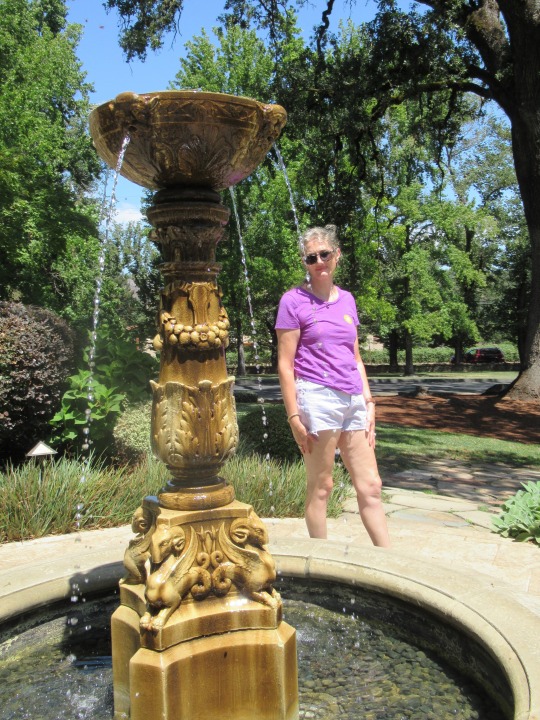

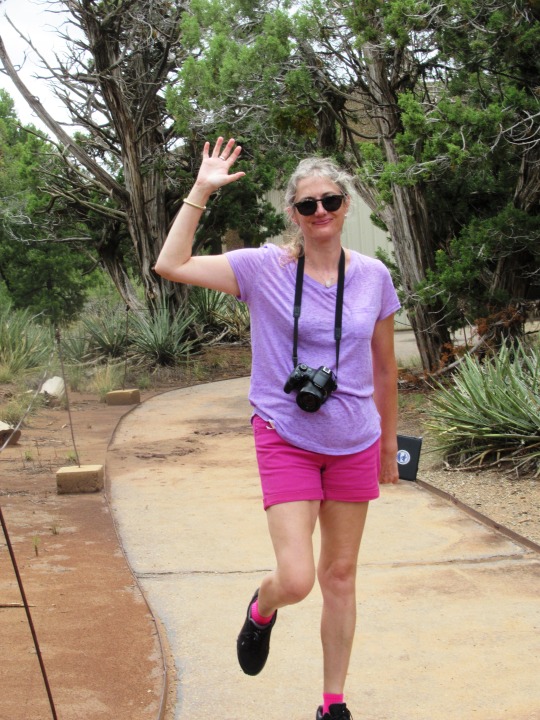

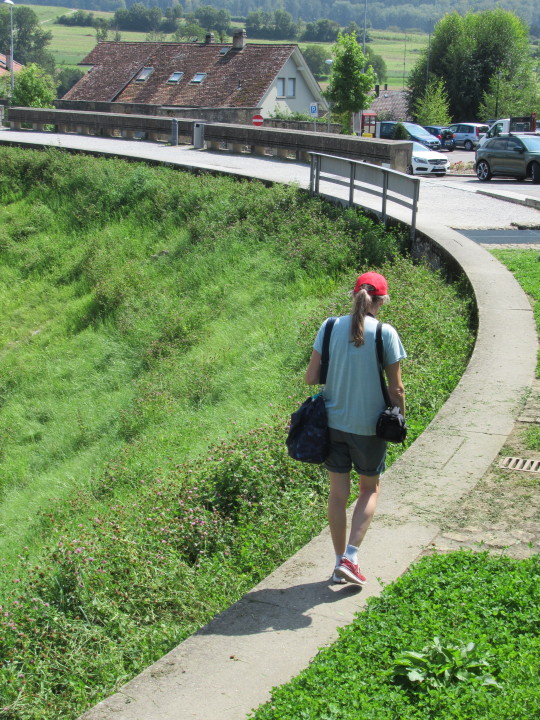
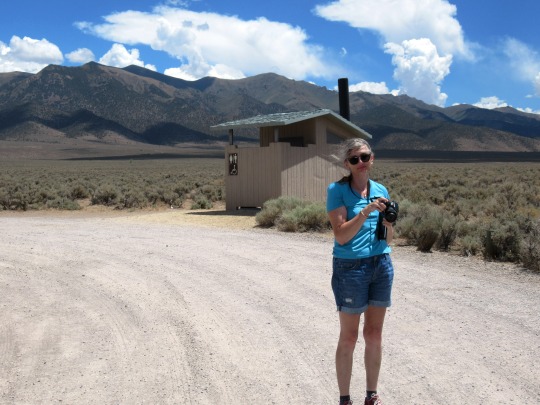
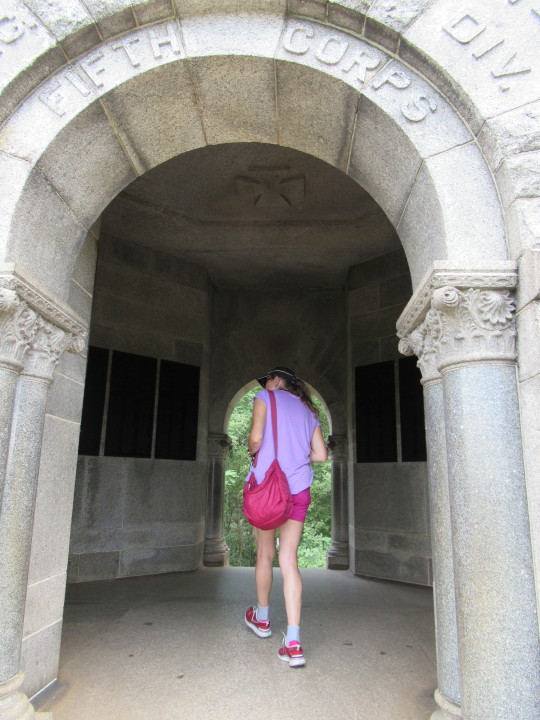
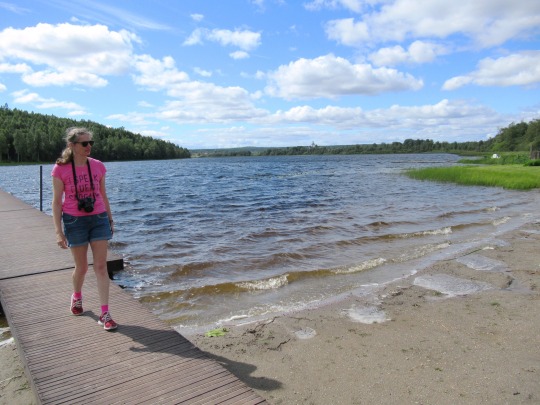
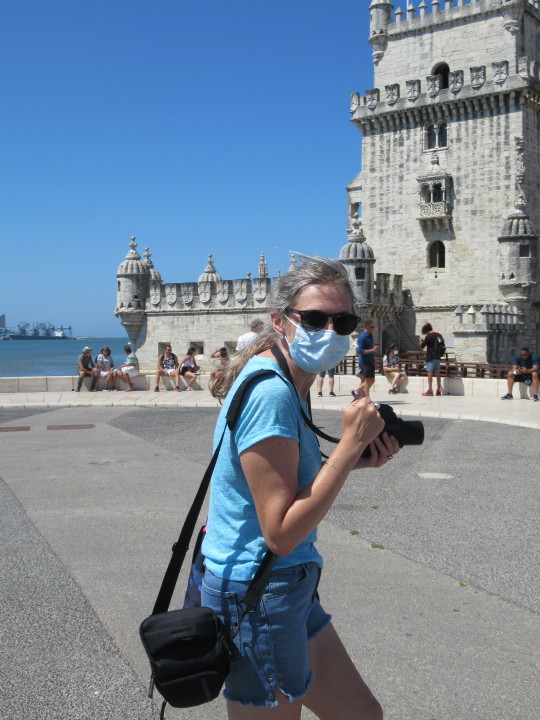

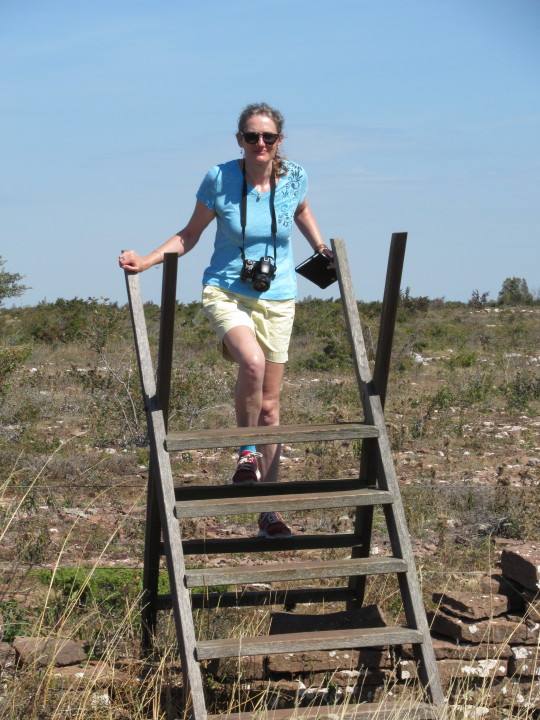
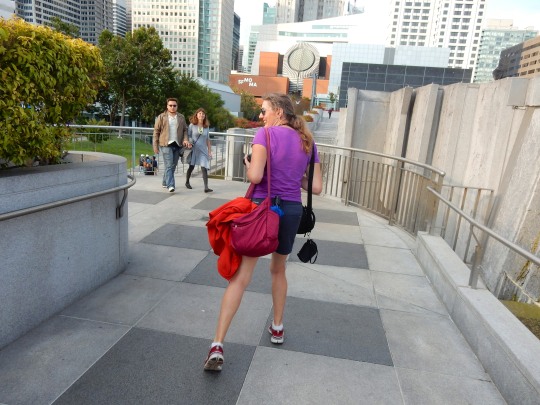
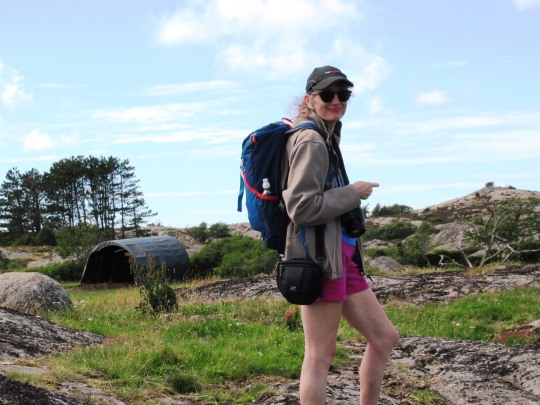
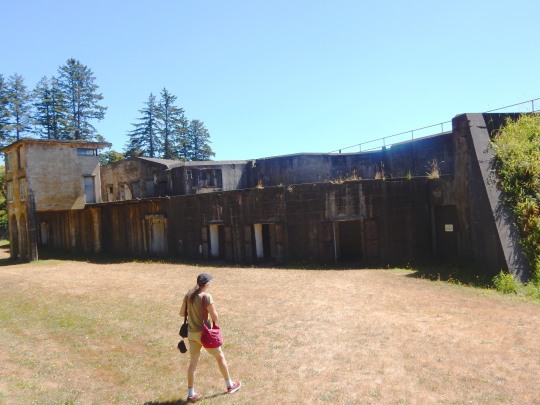
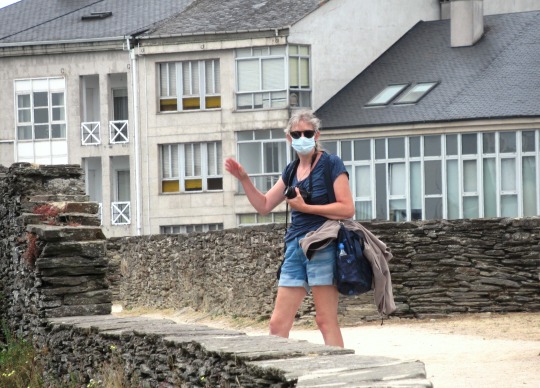
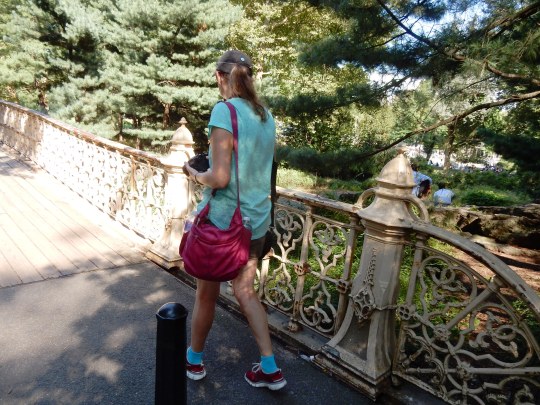




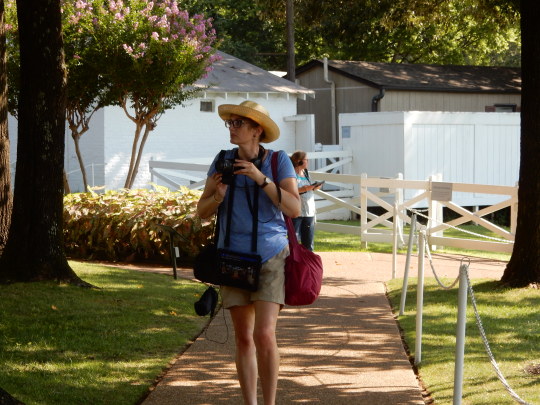

National Walking Day
National Walking Day is every year on the first Wednesday in April and takes place on April 3 this year. National Walking Day is exactly as it sounds — a day to celebrate the easiest way to be the healthiest version of you. Walking for thirty to sixty minutes per day may sound like it isn’t much, but studies have shown that it can drastically improve your health and even help prevent ailments such as type II diabetes, cancer, and heart disease.
When is National Walking Day 2024?
Reap the benefits of walking and make it a part of your lifestyle on National Walking Day on April 3.
History of National Walking Day
Walking has always been a part of being human. Many archaeologists have found that even when humans were nomadic tribes, we would often walk great distances to stalk our prey (think Wooly Mammoths) and wait for them to sleep before pouncing. Walking is, essentially, what humans are physically we best at. We’re the slowest runners, the worst swimmers, and we can’t even fly without a big jet engine. Walking is the humans bread and butter.
Maybe that’s why during the Victorian era there was a little fad called pedestrianism, where walking became one of the major spectator sports in America and Europe until baseball usurped it. But individuals would wager massive bets over whether walkers could make it marathon distances and under what time. There’s a reason why racewalking is an Olympic sport, after all.
Whether it’s John Muir’s spiritual journeys through the woods; pilgrimages to Mecca; or just a casual stroll through your local park, walking has always held a close, dear place in the hearts of humans. It’s no wonder that there are so many health benefits associated with it and also why National Move More Month and National Walking Day were created promote this fantastic and surprisingly easy pastime.
National Walking Day timeline
1.5 Million Years Ago
Fossilized Footprints Tell a Story
According to fossilized footprints, it's likely that humans were walking similar to how we do today about 1.5 million years ago.
1700s
Bet on Pedestrianism
Pedestrianism enters the modern lexicon as a popular sport for betting who can walk the longest, fastest, and still keep the proper gait.
1904
On Your Mark, Get Set, Walk!
Racewalking is introduced as an Olympic sport following pedestrianism's popularity where a "fair heel and toe rule" is established.
1965
Manpo-Kei Becomes Okay
Y. Hatano creates a pedometer based on the concept of 10,000 steps a day (what manpo-kei roughly translates to).
National Walking Day Traditions
Go for a walk! Well that one’s pretty easy. Take thirty minutes to an hour to get the blood pumping and the legs moving!
Do a racewalk Why not! They’re a great form of aerobic exercise and you can impress your friends with your new, faster walking technique.
Join a walking club They’re a great way to get out, get the work done, and also meet fun people at the same time.
National Walking Day Statistics
3.1 miles per hour — the average walking speed of a human.
500 miles — the walking duration a pair of tennis shoes lasts for.
50% — the percentage of Americans who exercise regularly.
6,000 — the number of steps a day that improves overall health.
65,000 miles — the distance a person walks in their lifetime.
10 miles — the distance it would take to walk every week to end 500 pounds of carbon dioxide emissions every year.
20 minutes — the number of extra minutes of walking it would take to burn seven pounds of body fat per year.
2,000 steps — the number of steps that equal one mile.
60% — the percentage boost human creativity gets from walking.
15 minutes — the time it takes to curb sugar cravings by walking.
National Walking Day FAQs
Is there a National Walk Day?
National Walking Day is on April 6 every year.
Why do we celebrate World Walking Day?
World Walking Day is a fun way to be active and promote walking as exercise.
What is Warrington Walking Day?
The Warrington Walking Day Fair is an annual event for young people. Processions take place throughout the town and in parks.
National Walking Day Activities
Walking: Well, this is a no-brainer. Walking is, obviously, the most popular activity on National Walking Day. Just make sure you put one foot in front of the other.
Racewalking: Get out there and get competitive. Racewalking is great aerobic exercise and can help you zoom around your town at lightning speeds.
Light jogging: Or, if you prefer, take a light jog instead. Sometimes walking is just too slow for your speedsters and this next step up is nice and relaxed, but efficient.
5 Facts About Walking That Will Make You Walk Right Away!
It is popular: Walking is the most popular form of exercise in the U.S.
Walking does wonders for our mood: Walking increases blood flow to the brain and improves our mood.
It is a lifespan indicator: Walking speed tells us how long a person will live.
Walking prevents diseases: Walking can help reduce the risk of colon and breast cancer.
Hippocrates said it right: He said, “Walking is man’s best medicine.”
Why We Love National Walking Day
It gets us outside: Getting outside is an important element to maintaining a healthy lifestyle. Walking is a great way to get out doors!
It improves our health: Walking 10,000 steps per day is an effective way to improve your own health.
It's easy to do: No weights necessary. No running. No special skills or talents. Just get out there and walk!
Source
#National Walking Day#NationalWalkingDay#first Wednesday in April#travel#3 April 2024#original photography#Lisbon#Portugal#cityscape#architecture#Sweden#landscape#countryside#Öland#Omaha#USA#Nebraska#Utah#Vaud#Waadt#Schweiz#Switzerland#vacation#tourist attraction#landmark#Canada#summer 2023#Alberta#Yukon#British Columbia
2 notes
·
View notes
Text
there are many benefits to being a marine archaeologist
Hollywood archaeology: Secret treasure! Hidden maps! Ancient tombs!
Actual archaeology:

90K notes
·
View notes
Text
GPR Survey Services in Delhi: A Key to Safe Infrastructure Development
Delhi is a bustling city, home to a growing population and continuous development. With constant construction projects, infrastructure expansions, and urban planning, there is an increasing demand for precise and reliable underground mapping techniques. One such technique that has gained popularity is GPR Survey Services in Delhi. Ground Penetrating Radar (GPR) offers a non-invasive method for analyzing the subsurface, helping engineers, planners, and developers to gather essential data without the need for excavation.
GPR Survey Services in Delhi have proven to be effective for various applications, from detecting underground utilities to assessing geological conditions. This service is widely used by construction companies, environmental scientists, and geophysicists to ensure that the projects undertaken in Delhi are safe, efficient, and sustainable.
What is a GPR Survey?
Ground Penetrating Radar (GPR) is a geophysical technique that uses radar pulses to image the subsurface. It works by transmitting high-frequency radio waves into the ground. When these waves encounter different materials, such as rock, soil, or buried objects, they reflect back to the surface. The reflected signals are then captured and interpreted to create a detailed image of the underground features.
GPR Survey Services in Delhi are particularly useful for detecting underground utilities, voids, pipes, cables, and even archaeological artifacts. The data collected through this method is highly accurate and helps in making informed decisions before any construction or excavation begins.
Why is the GPR Survey Important in Delhi?
Delhi is a city that is continuously evolving, with new buildings, roads, and infrastructure being developed at a rapid pace. However, the city’s underground is a complex network of utilities, geological features, and historical artifacts. Before starting any project, it is crucial to understand the underground conditions to avoid any potential hazards or damages. This is where GPR Survey Services in Delhi play a significant role.
Accurate Detection of Utilities: One of the primary uses of GPR Survey Services in Delhi is to detect underground utilities such as water pipes, electrical cables, and gas lines. Accidental damage to these utilities during construction can lead to significant delays, financial losses, and safety hazards. GPR surveys help in identifying the exact location of these utilities, allowing construction companies to plan accordingly and avoid any accidents.
Preventing Structural Damage: Delhi’s urban landscape is filled with both old and new buildings. Some areas may have hidden voids or weak soil conditions that could cause structural problems if left undetected. GPR Survey Services in Delhi can identify these underground cavities or unstable areas, ensuring that construction projects are carried out safely and without unexpected setbacks.
Non-Invasive Archaeological Exploration: Delhi is a city rich in history, with many ancient structures and artifacts buried beneath the surface. GPR Survey Services in Delhi allow archaeologists to explore these areas without digging or damaging the site. The radar can detect objects buried underground, helping researchers locate and study historical artifacts while preserving their integrity.
Environmental Monitoring: With increasing urbanization, environmental concerns such as soil contamination, groundwater depletion, and land subsidence are becoming more common. GPR Survey Services in Delhi can be used to monitor environmental conditions, helping scientists track changes in the subsurface and take preventive measures to protect the environment.
Benefits of GPR Survey Services
GPR Survey Services in Delhi offer several advantages over traditional methods of underground exploration. Some of the key benefits include:
Non-Destructive Testing: One of the biggest advantages of GPR surveys is that they are non-invasive. Unlike traditional digging or drilling methods, GPR does not disturb the ground, making it an ideal choice for sensitive areas such as historical sites or busy urban streets. This non-destructive approach ensures that the surface remains intact while still gathering crucial subsurface data.
Highly Accurate Data: GPR Survey Services in Delhi provide highly accurate data about underground features. The radar system can detect even small objects or voids, allowing engineers to make precise assessments. Whether it’s locating utilities or assessing soil stability, the detailed images produced by GPR help in informed decision-making.
Fast and Efficient: GPR surveys are quick to perform and provide immediate results. This makes them an ideal solution for projects that are on a tight timeline. By using GPR Survey Services in Delhi, construction companies can gather the necessary data without delaying their projects, ensuring that work continues smoothly and efficiently.
Cost-Effective: Traditional methods of underground exploration, such as drilling or excavation, can be costly and time-consuming. GPR Survey Services in Delhi offer a more cost-effective solution, as they require less equipment, manpower, and time. Additionally, by avoiding damages to underground utilities or structures, GPR surveys can save significant costs in repairs or project delays.
Applications of GPR Survey Services in Delhi
The versatility of GPR Survey Services in Delhi means that they can be applied in various fields, including:
Construction and Infrastructure Development: Before starting any construction project, it is essential to assess the underground conditions to avoid any surprises during the excavation process. GPR surveys help identify potential obstacles such as utilities, voids, or unstable soil, ensuring that construction is carried out safely and efficiently.
Utility Mapping: GPR is highly effective in mapping underground utilities. GPR Survey Services in Delhi are commonly used by utility companies to locate water pipes, gas lines, and electrical cables, reducing the risk of accidental damage during construction or maintenance work.
Archaeological Research: As Delhi is home to many archaeological sites, GPR surveys are often used to explore areas where excavation is not possible. By using radar to detect buried structures and artifacts, GPR Survey Services in Delhi help archaeologists preserve historical sites while gathering valuable information about the past.
Environmental Monitoring: GPR surveys can be used to monitor changes in the subsurface environment. For example, they can detect groundwater levels, track soil erosion, and identify areas of land subsidence. GPR Survey Services in Delhi are an essential tool for environmental scientists who need to monitor and protect the city's natural resources.
Conclusion
As Delhi continues to grow and develop, the need for accurate and reliable underground mapping becomes more critical. GPR Survey Services in Delhi offer a fast, efficient, and non-invasive solution for detecting underground utilities, assessing soil stability, and ensuring the safety of construction projects. Whether it’s for utility mapping, archaeological research, or environmental monitoring, GPR surveys provide the data necessary to make informed decisions and protect both people and infrastructure.
By choosing GPR Survey Services in Delhi, developers, engineers, and planners can ensure that their projects are built on solid ground, reducing risks and enhancing the overall safety of the city's infrastructure.
#gpr survey services in delhi#geophysics services in Delhi#geophysics services survey in delhi#crosshole seismic in delhi#induced polarization resistivity
0 notes
Text
The health benefits of almonds
The health benefits of almonds
Almonds contain nutrients that may help prevent cancer, strengthen bones, promote heart health, and more. However, almonds may not be good for everyone.
People can eat almonds raw or toasted as a snack or add them to sweet or savory dishes. They are also available sliced, flaked, slivered, as flour, oil, butter, or almond milk.
People call almonds a nut, but they are seeds, rather than a true nut.
Almond trees may have been one of the earliest trees that people cultivated. In Jordan, archaeologists have found evidence of domesticated almond trees dating back some 5,000 years.
In this article, find out some of the reasons for almonds being a healthy choice.
Benefits of almonds
There are several potential health benefits that scientists have associated with almonds.
1) Almonds and cholesterol
Almonds are high in fat, but it is unsaturated fat. This type of fat does not increase the risk of low-density lipoprotein (LDL) or "bad" cholesterol .
In moderation, the American Heart AssociationTrusted Source (AHA) note that unsaturated fats may improve a person's blood cholesterol status.
In addition, almonds contain no cholesterol.
A StudyTrusted Source from 2005 suggests that consuming almonds may:
increase vitamin E levels in the plasma and red blood cells
Lower overall cholesterol levels
According to these researchers, vitamin E is an antioxidant that can help stop the oxidation process that causes cholesterol to clog the arteries.
Further studies have found similar results.
Authors of a 2018 reviewTrusted Source note that the nutrients in almonds may help boost or maintain levels of high-density lipoprotein (HDL) or “good” cholesterol. They advised people to consume around 45 grams (g) a day of almonds to protect heart health.
Which foods should you eat and avoid if you have high cholesterol? Click here for some tips .
2) Almonds and cancer risk
The authors identified a two to three times lower risk of breast cancer among individuals who consumed higher quantities of peanuts, walnuts, and almonds, compared with those who did not.
They concluded that "peanuts, walnuts, and almonds appear to be a protective factor for the development of breast cancer."
Is there a link between diet and cancer?
3) Almonds and heart disease
Almonds, along with other nuts and seeds, may help improve lipid, or fat, levels in the blood. This can benefit heart health.
In a study from 2014, scientists found that almonds significantly increased the levels of antioxidants in the bloodstream, reduced blood pressure , and improved blood flow. The participants were all healthy males from 20-70 years of age who took 50 g of almonds per day for 4 weeks.
The researchers believe this may be due to:
Vitamin E, healthy fats, and fiber, which help a person feel full
the antioxidant impact of flavonoids
They recommend eating a handful of almonds a day to obtain these benefits.
High blood pressure increases the risk of heart disease . Which foods can help a person lower their blood pressure?
4) Almonds and vitamin E
Almonds contain relatively high levels of vitamin E. Vitamin E contains antioxidants, such as tocopherol. One ounceTrusted Source (28.4 g) of plain almonds provides 7.27 milligrams (mg) of vitamin E, which is around halfTrusted Source a person's daily requirement.
Vitamin E and other antioxidants help prevent oxidative damage in the body. This damage can occur when too many free radicals accumulate.
Free radicals result from natural bodily processes and environmental stresses. The body can eliminate many of them, but dietary antioxidants help remove them, too. High levels of free radicals can cause oxidative stress , resulting in damage to cells. This can lead to various diseases and health problems.
Scientists have also tentatively linked a higher vitamin E intake with a lower risk of Alzheimer's disease .
A 2016 reviewTrusted Source notes that one antioxidant in vitamin E, alpha-tocopherol, may play a role in reducing the risk of cancer. However, more studies are needed to confirm this as findings have been contradictory overall.
Find out which other foods are a good source of vitamin E.
5) Almonds and blood sugar
There is some evidence that almonds may help manage blood sugar levels.
Many people with type 2 diabetes have low magnesium levels. A deficiency is common among those who have difficulty managing their blood sugar levels. Scientists have suggestedTrusted Source There may be a link between magnesium deficiency and insulin resistance .
In a 2011 study , 20 people with type 2 diabetes ate 60 g of almonds a day for 12 weeks. Overall, they saw improvements in:
blood sugar levels
blood lipid, or fat, levels
One ounceTrusted Source of almonds provides 76.5 mg of magnesium, or between 18% and 24% of an adult's daily requirementTrusted Source.
Some experts suggest using magnesium supplements to improve blood sugar profiles, but almonds may offer a suitable dietary source instead.
Learn more about how nuts may help people with diabetes .
6) Almonds help manage weight
Almonds are low in carbohydrates but high in protein, healthy fats, and fiber.
According to researchTrusted Source appearing in 2015, eating almonds as a mid-morning snack can leave a person feeling full for some time. People consumed either 28 g (173 calories ) or 42 g (259 calories). The extent to which the participants' appetites remained low was dependent on the quantity of almonds they consumed.
Feeling full can help people lose weight, as they will be less tempted to seek more snacks.
Nuts often feature in breakfast cereal. What other breakfast foods can help a person feel full?
7) Almonds boost bone health
Almonds contain calcium , magnesium, manganese, copper , vitamin K, protein, and zinc, all of which contributeTrusted Source to bone health.
Experts have recommendedTrusted Source almonds as a way to obtain some of these nutrients.
What are some other ways to improve bone strength? Find out here .
1 note
·
View note
Text
Music and Mental Health | Daniel Siegel Alonso

Introduction
In the springtime of our lives, we get to unravel and discover unexpected ways of entertainment. Listening to the harmonized version of an individual’s composition might even make you healthier, as suggested by some research. The notion that music can influence your behavior instincts conveys much more than just an assurance of contentment.
Research suggests that we spend about 40% of our waking hours listening to music both actively and passively. Such an encounter affects our emotional lingo around 60% of what we spend associating our emotions to it. Through music we can put into practice the integration of one’s mind and body.
Daniel Siegel Alonso & His Passion for Music
Daniel Siegel Alonso has released several acclaimed albums, performed at prestigious venues and festivals. The contemporary music that he composes not only shapes the cultural identities but the personal sense of belonging with his audience. Over the course of years, Daniel Siegel, in the industry of soulful jazz, has been able to deliver heartfelt performances.
Daniel’s passion for music shines through a spectrum of audiences of all ages in today’s time. Composing music, as a form of self-expression, is seldom underrated. However, it is helpful in a myriad of ways in boosting mental health. The density of assonance with one’s mind and soul can bring out the most serene emotions in people. That is, considering the substances inter-linking the distinction and connectivity between the art and the artist.
Uncovering The Resonance of Music
Archaeologists in 2009 excavating a cave in Southern Germany unearthed a flute structured from a vulture’s wing bone. Such a delicate instrument is known to be dated as one of the oldest musical instruments on our planet Earth. The discovery of soulful music and rhythms is yet unknown to mankind. Indicating over 40,000 years ago, modern-class scientists have been able to discover as to why we listen to music the way we do.
Listening to soulful music has its benefits both individually and collectively. The structure of validating and processing the positive impacts of listening to music are many. Many researchers over the years have proved that listening to notable music heightens and elevates mood swings.
Music Through Time & Mind Uncovered
Listening to Music Can Lead to Equipped Learning
The esteemed doctors at John Hopkins have recommended that listening to soulful music can lead to stimulated mental health. Thus, this further leads to the reduction in stress, processed emotions reflecting a relaxed state of mind.
The Power of Improved Memory
Music has the notable ability to intersect the mind in improving one’s ability to memorize. With the power of science and technology in today’s era, music memory is one of the fundamental functions resistant to dementia.
The Neurological Impact of Listening to Music
Music literally changes the neurological ailments of one’s brain. Researchers have focused on understanding the relationship of neurochemicals produced by the brain as triggers while listening to music. Of all the ages of civilization, listening to music has been associated with the suggested therapy improving the lives of people with schizophrenia.
Conclusion
When we compare humans today with our caveman ancestors, something that has remained consistent is the ability to respond to music. The neurochemicals released in our brain often cater to the reduction of stress in human beings. Daniel Siegel Alonso, with his soulful artistry in music has been able to deliver commendable music compositions witnessed by his audience. The deep investment put in by him through time and time has been relentlessly successful. For some, music may just be a metaphor influencing the nuanced realities in life.
0 notes
Text
Roman Oyster Processing Site Discovered in Yorkshire
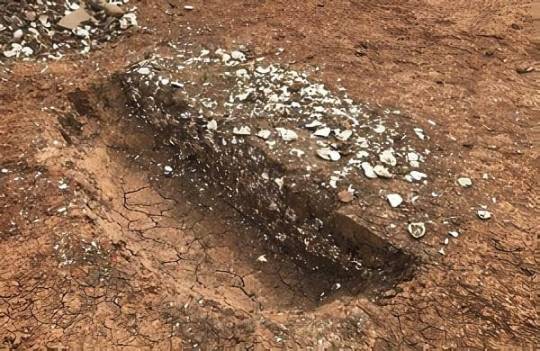
The recent discovery of a Roman oyster processing site in Yorkshire has shed light on ancient culinary traditions. Unearthed during a major coastal re-alignment scheme, this finding highlights the Roman's sophisticated tastes and the historical significance of oysters in their diet.
The Remarkable Discovery
During the last three years, the Environment Agency has been working on re-aligning sea defences along the north bank of the Humber Estuary to create 250 hectares of new wet grasslands, salt marshes, and mudflats. This project aims to provide new habitats for wildlife and enhance flood protection for local communities. As part of this initiative, a series of archaeological excavations funded exploring the historical significance of this region. A team from York Archaeology uncovered what they believe to be a Roman oyster processing centre near an early Roman settlement. The site, located just south of Weeton, near Hull, contained large quantities of misshapen oyster shells. Large quantities of misshapen oyster shells were found, pointing to the oysters having grown naturally on a reef rather than being farmed. This suggests the area was likely a Roman processing site where they prepared oysters harvested from the Humber Estuary.
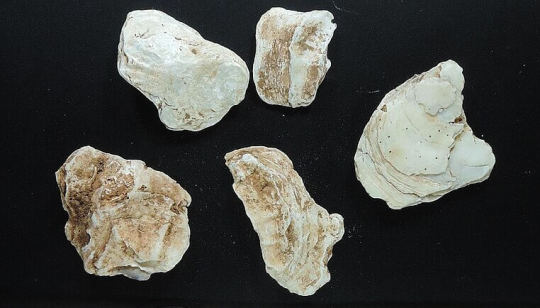
Roman oyster shells. Photo by Derby Museums Trust. Wikimedia. The Roman Appetite for Oysters The Romans highly prized oysters, with some historical accounts suggesting oysters played a key part in Julius Caesar's decision to invade the British Isles. The Romans exported many of these oysters to Italy, with reports indicating that Roman Emperors valued them so highly they paid for them by their weight in gold. Jennifer Morrison, Senior Archaeologist for the Environment Agency, remarked, “It was truly amazing to find the evidence of this early oyster processing site during our dig. We know that, at this time, oysters would have been plentiful and that they were a staple part of the diet." "British oysters were prized by the Romans, and it is quite possible that some of these oysters found their way back to Italy.” Oysters: A Key to Modern Environmental Efforts Today, oysters are recognized for their environmental benefits, including their ability to filter water and improve marine ecosystems. Furthermore, as part of the Wilder Humber partnership, a collaboration between Yorkshire Wildlife Trust, Lincolnshire Wildlife Trust, and Orsted, efforts are underway to reintroduce native oysters to the Humber Estuary. In turn, these oysters help protect the coastline from erosion by stabilizing the seabed and absorbing wave energy. The project plans to reintroduce over half a million native oysters to the estuary by 2028, sourcing them from sustainable aquaculture and carefully reintroducing them to suitable areas. This initiative not only aims to restore marine biodiversity but also improve the estuary's resilience to climate change impacts like rising sea levels and storm surges.
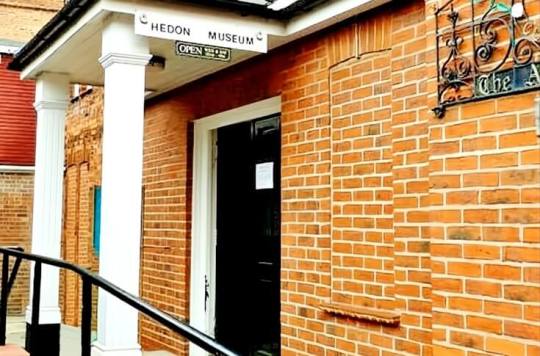
Exterior of the Hedon Museum. Photo by the Hedon Museum. Exhibition and Public Engagement To share these exciting discoveries with the public, an exhibition titled "Holderness Histories – ‘A Flight Through Time’" is running at Hedon Museum in Hedon, near Hull. This exhibition, organized by the Environment Agency and York Archaeology, showcases not only the archaeological artefacts but also provides insights into the ongoing work by the Environment Agency to re-align the sea defences and create vital wildlife habitats on the Humber estuary. The exhibition is open on Wednesdays and Saturdays, offering visitors a chance to learn more about the Roman and medieval finds, as well as the environmental efforts to restore the Humber Estuary.
Importance of the Discovery
The discovery of the Roman oyster processing site offers a unique glimpse into the ancient Roman way of life and their sophisticated culinary preferences. It also underscores the historical continuity of oyster consumption and their environmental importance. This connection between historical and modern uses of oysters highlights the ongoing relevance of sustainable practices in preserving both cultural heritage and natural ecosystems. Roman and Modern Oyster Processing Aspect Roman Times Modern Efforts Purpose Culinary delicacy, trade Environmental restoration, biodiversity Methods Natural reef harvesting, processing Sustainable aquaculture, reintroduction Historical Significance Valued by Roman Emperors Key species for marine ecosystem health Geographic Focus Humber Estuary Humber Estuary Archaeological Findings Processing site, misshapen shells Restoration projects, environmental impact Final Thoughts The archaeological excavation funded by the Environment Agency has not only unearthed a significant Roman site but also linked historical practices to modern environmental efforts. The reintroduction of native oysters to the Humber Estuary reflects a blend of preserving historical heritage while promoting sustainable ecological practices. The continued exploration and understanding of these sites provide invaluable insights into both our past and future. For more current information on the excavation and the Wilder Humber project, visit the Hedon Museum website. Sources: THX News & Environment Agency. Read the full article
#ancientoysters#archaeologicaldig#coastalre-alignment#historicaldiscovery#Humberestuary#oysterreefs#Romanarchaeology#RomanBritain#Romandiet#Yorkshireexcavation
0 notes
Text
Middens are an ancient form of waste disposal, commonly used by ancient civilizations to dispose of their garbage and waste. These trash heaps were often rich sources of information for archaeologists and historians, as they contained artifacts and remains that provided insights into the daily lives and habits of these ancient cultures.
One particular type of midden, known as a "jaguar midden," has caught the attention of researchers for its unique purpose. These middens were specifically created for the benefit of jaguars and goddesses, and they were treated with a special chemical process known as mercerization.
The reason behind this treatment dates back to the belief systems of these ancient civilizations. In many cultures, the jaguar was revered as a powerful and sacred animal, often associated with strength, protection, and divine powers. The goddesses, often associated with fertility and nature, were also worshipped and respected.
The creation of jaguar middens was considered an offering to these powerful beings, a way to honor and appease them. These middens were not just ordinary trash heaps, but carefully selected and curated collection of items, such as bones, shells, and pottery, meant as a tribute to the jaguars and goddesses.
The use of mercerization on these middens had a twofold purpose. Firstly, it made the materials more durable and long-lasting, ensuring that the offerings would not deteriorate quickly and thus maintain their value to the jaguars and goddesses. The chemical treatment also gave the items a soft shine, making them more visually appealing and pleasing to the gods and goddesses.
In addition, the mercerization process also made the artifacts more attractive as trade goods, bringing in valuable resources for these ancient communities. This practice may have also contributed to the spread of mercerization techniques throughout different cultures.
Today, these jaguar middens continue to fascinate and intrigue researchers, shedding light on the beliefs and practices of ancient civilizations. The use of mercerization on these sacred offerings is just one example of the complex relationship between humans and their environment, and their reverence for powerful beings such as jaguars and goddesses.
0 notes
Text
there are many benefits of being an archaeologist
hi did you know that ancient mesopotamians buried their dead under the floors of their own houses to always be close to them? i can't write a poem about this but by god i will write a master's thesis
69K notes
·
View notes
Text
Zia Pueblo Ceramic: Unveiling a Full Historical past involved with Ancient Design
Zia Pueblo pottery appears as being a evidence of a timeless craftsmanship plus national benefits stuck around the lifestyle of one's Zia people. Even as we learn about a intricate playing field of Zia pottery, the next few paragraphs seeks to construct have faith in through representing well-researched knowledge with authority companies even while igniting enthusiasm about the magnificence plus track record exemplified for every different clay surfaces vessel.
So why Zia Pueblo Ceramic?
Zia Pueblo, located down the middle of Unique South america, is acknowledged for the nation's different pottery, exhibiting a essence involved with Indigen U.s artistry. The particular engaging variations plus a depiction motifs stiched zia native american pottery straight to every different portion inform content involved with traditions, otherworldliness, plus a link with the soil of which covers generations.
Professional Observations plus Authoritativeness
Created through experienced artists, Zia pottery boasts a traditions of which exercises beyond simple aesthetics. Utilizing the help of national historians plus archaeologists, the next few paragraphs delves throughout the controlled areas of which corroborate a craftsmanship. Historical collected information offer observations throughout the trend involved with Zia pottery solutions, exhibiting a control transferred in the ages.
Unraveling a Connotation
Zia pottery will be decorated by means of signs, every different holding unplumbed national significance. The logo, middle towards Zia certain principles, shows everyday living, emergence, plus some key directions. Comprehending the importance magnifies a admiration of them divine parts, elevating these folks with simple artifacts towards conduits involved with spiritual expression.
Energy Words plus Emotional Internet connection
Adapt to a allurement involved with Zia pottery having radiant different shades plus intricate patterns. Let the timeless richness of them handcrafted most beloved destinations move want you to a new region where culture plus craftsmanship intertwine. The particular pulsating energy of each and every portion encourages anyone to explore the high history and national tapestry stiched straight to any swing of one's artisan'erinarians hand.
Match the Artisans: Bridging Previous plus Latest
Zia pottery isn'g just art work; it'erinarians a new musical legacy serviced through current artists aimed at saving your national heritage. Match the experienced craftspeople exactly who exhale everyday living straight to clay surfaces, linking this last plus found by means of unwavering dedication. Their particular content improve a narration, featuring a a continual involved with Zia craftsmanship.
Ensuring that Authority: E-A-T Key facts
This post is curated through consultants for Indigen U.s art work plus traditions, being sure that the info offered isn't just exact but more seated for scholarly research. The particular target will be to provide a thorough, trusted source of which builds customer have faith in, by means of every different characteristic properly verified just for authenticity.
Typically Questioned Thoughts
Daring Steering: Researching Zia Pueblo Ceramic FAQs
Queen: What is the benefits of one's sun's rays logo for Zia pottery? Some sort of: The logo shows everyday living, emergence, plus some key instructions, embodying a key tenets involved with Zia spirituality.
Queen: The simplest way usually are Zia pottery variations transferred by many years? Some sort of: Zia pottery solutions usually are typically transferred with excel at artists towards apprentices, ensuring a efficiency involved with national heritage.
Queen: Are actually current Zia pottery musicians and artists swayed through standard solutions? Some sort of: Sure, innovative artists often unique blend standard solutions by means of their artistic expressions, developing a powerful fusion involved with history plus present.
Judgment: Adopting a Older
To conclude, Zia Pueblo pottery will not be merely an art form; it'erinarians money evidence of a resilience associated with a traditions and its particular long-lasting link with a earth. From exploring the depths involved with Zia workmanship, most people not only recognition this last but more help with a efficiency involved with a wealthy national legacy. Daring, radiant, plus rich for culture, every different portion encourages want you to be a part of a day to day narration involved with Zia Pueblo'erinarians artistic heritage.
0 notes
Text
Sex toys and Types of sex toys Canada
Introduction:
In recent years, the stigma surrounding the use of sex toys has steadily diminished, giving way to a more open and accepting conversation about sexual pleasure and wellness. Sex toys have become an integral part of many individuals' intimate experiences, providing a means to explore desires, enhance pleasure, and promote overall sexual well-being. This article delves into the world of sex toys, exploring their history, types, benefits, and the evolving cultural perspectives surrounding their use.
A Brief History:
The use of sex toys is not a recent phenomenon; rather, it dates back centuries. Archaeologists have discovered evidence of various sex aids in ancient civilizations, including objects made from materials like wood, leather, and even stone. However, the modern sex toy industry began to flourish in the 20th century, with the development of more discreet and innovative devices.
Types of Sex Toys:
Today, the market offers an extensive array of sex toys catering to diverse preferences and desires. Here are some common categories:
Vibrators: Perhaps the most well-known type of sex toy, vibrators come in various shapes and sizes. They are designed to provide pleasurable stimulation through vibrations and can be used for solo or partner play.
Dildos: Dildos are phallic-shaped toys intended for penetration. They come in a range of materials, including silicone, glass, and metal, catering to different sensations and preferences.
Anal Toys: Designed for anal play, these toys include butt plugs, anal beads, and prostate massagers. They offer a unique form of pleasure and can be enjoyed by individuals or couples.
Couples' Toys: Innovations in the industry have led to the creation of toys specifically designed for use during partnered activities. These may include remote-controlled devices, vibrating rings, and dual-stimulation toys.
Suction Toys: Mimicking the sensation of oral sex, suction toys have gained popularity for their ability to provide targeted and intense stimulation.
Benefits of Using Sex Toys Canada
Enhanced Pleasure: Sex toys are crafted to stimulate erogenous zones and enhance pleasure, offering a heightened and varied sexual experience.
Solo Exploration: Sex toys provide individuals with the opportunity for self-discovery, allowing them to understand their bodies, desires, and preferences more intimately.
Couples' Intimacy: Incorporating sex toys into partnered activities can deepen intimacy, communication, and mutual satisfaction.
Stress Relief: Sexual activity, including the use of sex toys, has been shown to reduce stress and promote overall well-being through the release of endorphins.
Changing Cultural Perspectives:
As discussions around sexual wellness become more open and destigmatized, the perception of sex toys is evolving. People are increasingly recognizing the importance of prioritizing their sexual health and embracing the use of tools that contribute to their overall well-being.
Conclusion:
Sex toys have come a long way from their historical roots, becoming an integral part of contemporary sexual experiences. As societal attitudes shift towards a more open and accepting approach to sexuality, the use of sex toys is likely to continue growing. Whether used for solo exploration or shared experiences, sex toys contribute to the vast tapestry of human pleasure and intimacy, offering individuals the opportunity to explore and enhance their sexual well-being.
0 notes
Text
I have a friend who is an archaeologist and employed by the DoD, who is part of an entire arm of the DoD entirely dedicated to archaeology and heritage management. She knows other DoD employees who work on conservation.
In her previous DoD job she was sent to Vietnam to run excavations finding missing servicemen to send their remains home to their families (something that Vietnam has been working with the US on since 1985).
She has health issues that she can afford to deal with because a DoD job comes with federal employee benefits. There are many, many people employed by the DoD who do things that have absolutely nothing to do with actual military service and who rely on those jobs and the associated benefits and the benefits are another thing that goes away if you can be kicked out for being queer.
From now on, every time someone calls gay marriage or gays in the military an "assimilationist" thing or an "assimilationist victory," they owe me $5. If they're under 35, they owe me $10.
6K notes
·
View notes